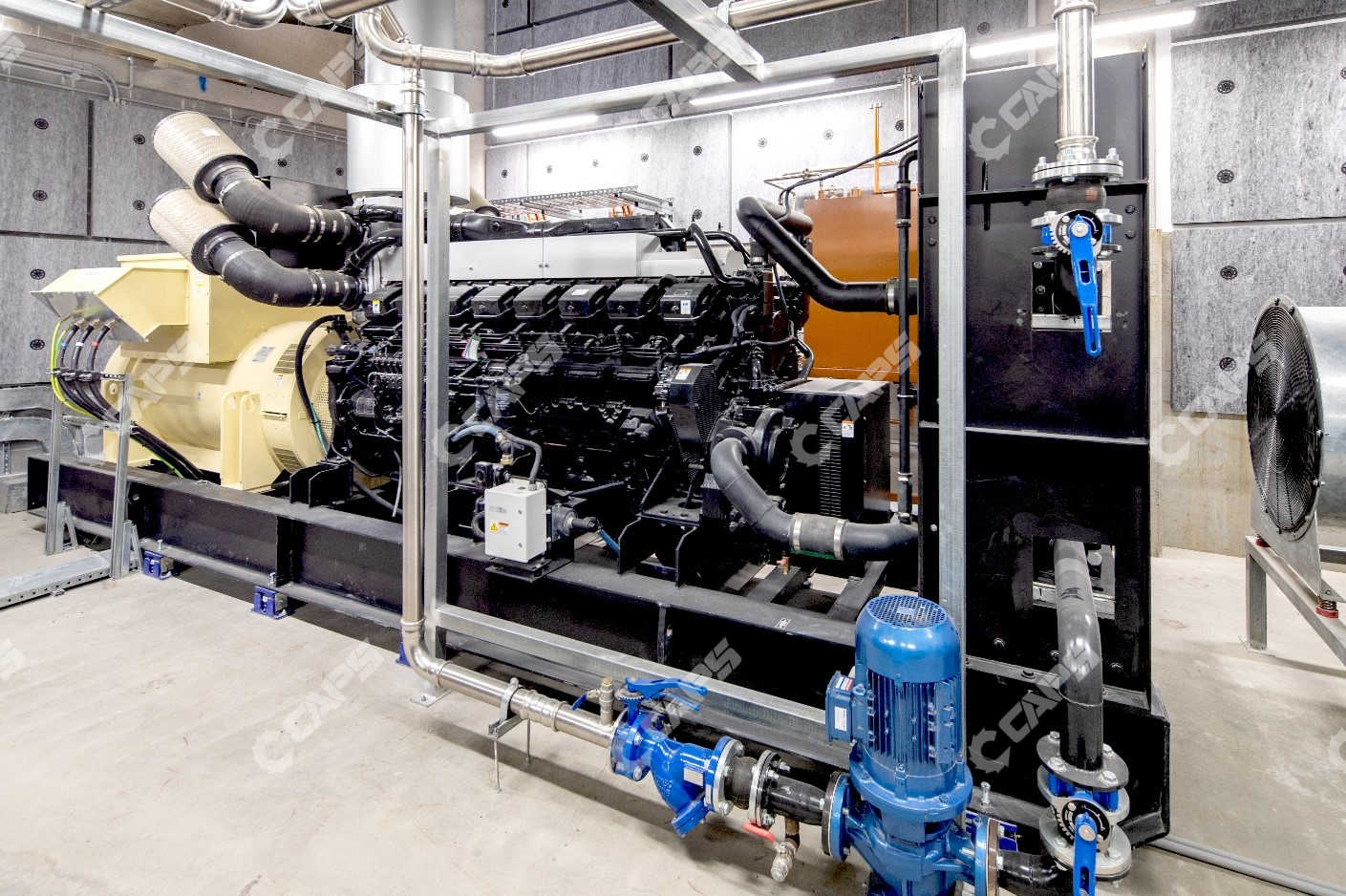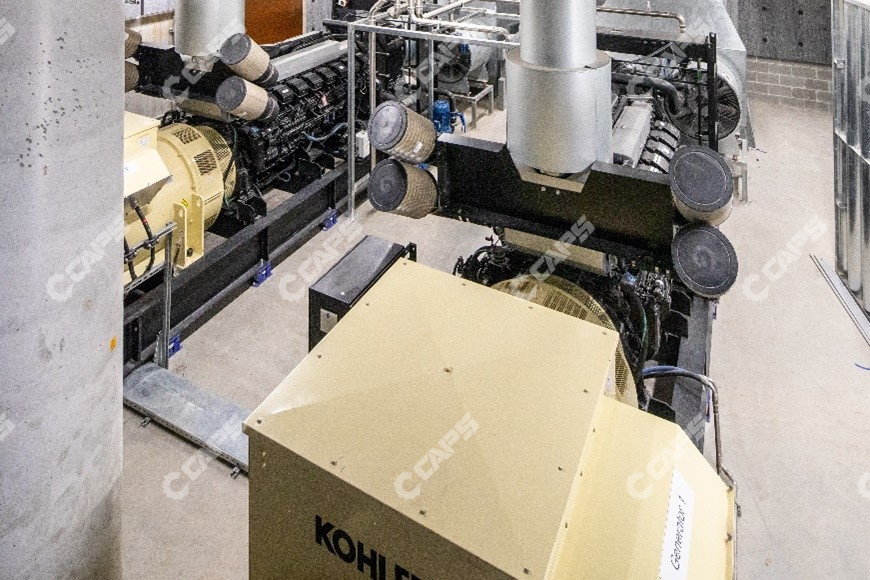Our Solutions
Once John Holland and Fredon entrusted CAPS with the venue’s Diesel power generation requirements, CAPS Project engineering team set to work on developing a power generation solution that would suit the requirements of the Sydney Football Stadium’s events and activities.
“Because of the unique set of challenges on this project, we had to think outside the box about how we could achieve the best possible results for the client,” says Hashem.
To maximise efficiency on power generation, CAPS supplied, installed and commissioned two custom packaged KOHLER KM2100 open generator sets rated at 2000kVA and 11kV.
“We had the two KOHLER generators custom built to spec because they are one of the most robust, cost-effective units available on the market for power generation,” explains Andrew Wong – Controls and Commissioning Lead. “From there, we tackled some of the other design challenges such as cooling of the generator sets, plant room and noise attenuation.”

Remote Cooling System
To reduce space in the power plant room, CAPS fitted each power generator unit with a premium grade diesel engine and heat exchanger for cooling which connected to a custom-built remote radiator that was installed on the roof of the building.
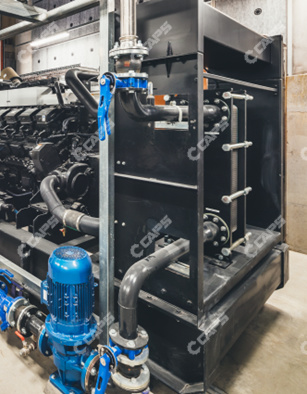
“The remote radiator solution directs water flow vertically for cooling,” explains Hashem. “We also ran exhaust pipes up to the roof to dispel exhaust fumes from the interior space, and utilised water pumps that carry heated coolant up to the roof to be cooled, before being cycled back down again into the diesel engine heat exchangers.” The result was a streamlined cooling system for the plant that maximises efficiency and space.
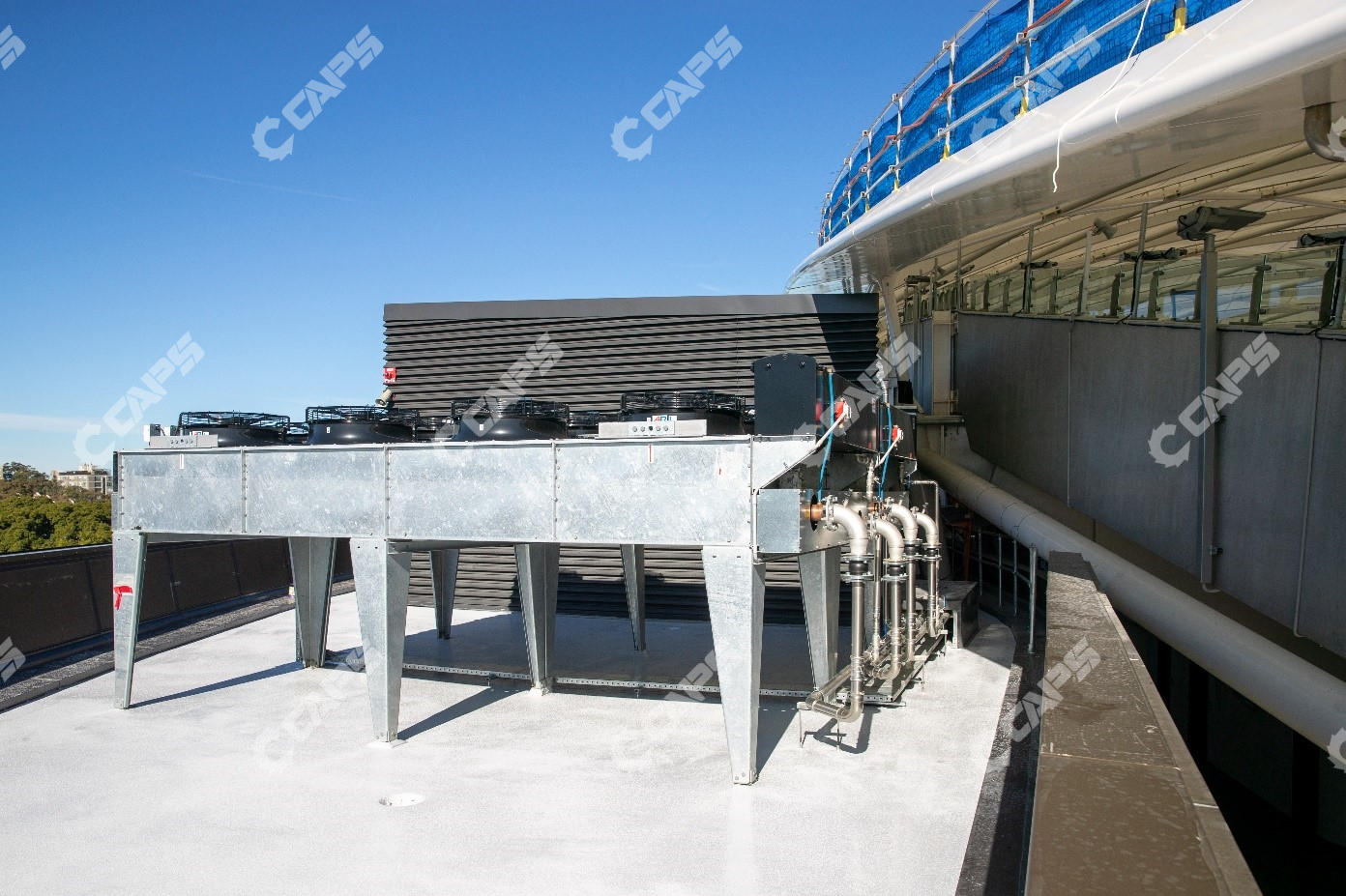
Noise Reduction
Ambient, vibrational and/or noise was a concern with this diesel power generation projects as any excess noise will compromise the safety and peace of mind of those nearby.
“Repetitive noise from diesel generators over time can result in hearing loss for workers in the environment and is unpleasant for the community,” explains Pragnesh. “Noise control measures must be in place to protect the health and safety of workers and the public. The decibel output must comply with the appropriate land use and local council regulations, and account for the proximity of the power plant room to public areas.”
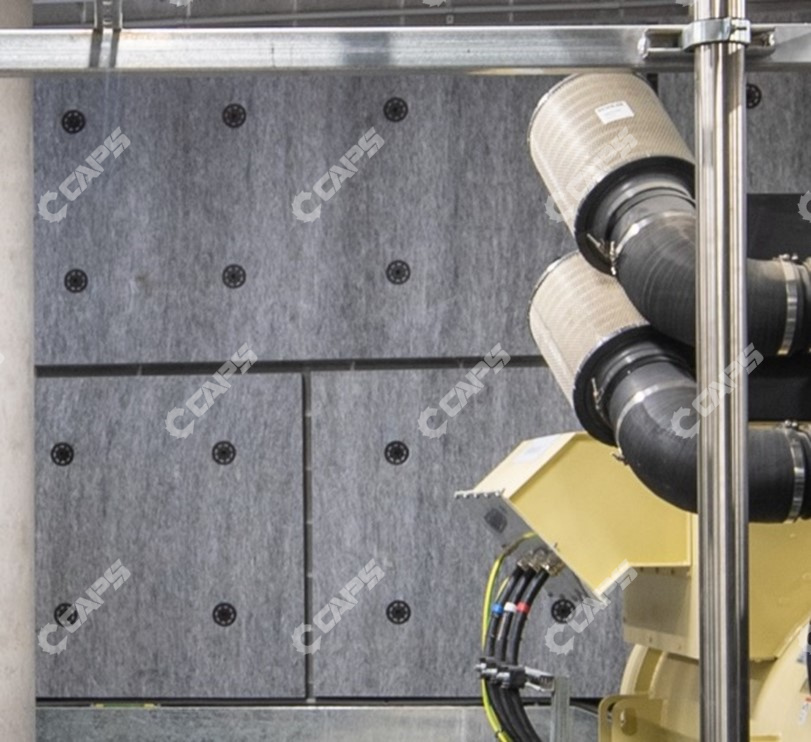
Reducing the room’s vibrational noise level required high efficiency vibration mounts installed on each power generation unit. Additionally, CAPS installed soundproof wall lining in the plant room to neutralise and reduce the ambient noise before it passes through the walls to the walkway outside of the power plant room.
The result was a near silent power generation plant room solution meeting project specification requirements that would be undetectable to visitors passing by on the thoroughfare and safer for plant room maintenance workers.
Generators Start-Up
The project requirement was that, upon a Mains failure, the two emergency power generators synchronise, once the two generators have synchronized and stabilised, they are ready to supply the stadium load which is all within 60 seconds, this time also includes all the required HV switching. This meant that there wasn’t sufficient time to sequence, Once the switching is all completed the generators begin to energise the five individual transformers downstream, the challenge is all five transformers need to be energised in unity.
The challenge was to cope with the high total in-rush current of the transformers, which was far above the overcurrent limit of both generators collectively, this meant the generators would overload and trip in a few seconds after start-up, in other words the generators wouldn’t be operational. This could have been a total failure for the Emergency Power system.
CAPS engineering came up with a non-conventional solution and utilised the dead-bus synchronisation methodology, modifications in the generator controllers were carried out at site by CAPS engineering and the system was successfully tested in compliance with the requirements, says Andrew.
The Results
CAPS’ final proposal for the project was a premium grade, turn-key power generation solution for the stadium that included detailed specifications for the plant room design; the supply of customised state-of-the-art power generator units, the installation of noise attenuators and soundproof walls; and mounted heat exchangers with remote cooling and exhaust silencer.
CAPS’s unique selling proposition on the design and construct contract was their dedicated engineering capabilities that could provide all of the requisite installation and support services, meet the specifications of projects, and oversee the whole process from design, installation, commissioning, testing and post-commissioning support.
Following the successful installation of the new power generation solution, CAPS’ engineering services team will continue to provide 24/7 after sales service and perform regular maintenance on the system.
The building is slated for completion ahead of the NRL Grand Final in 2022. As construction nears completion on the Sydney Football Stadium, CAPS’ power generation solution will play an important role in the operation of the stadium when it opens to the public.
We’d like to thank John Holland, Fredon and the Sydney Football Stadium for allowing us to partner on this very important project.
